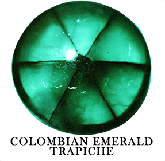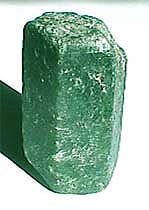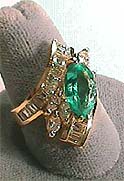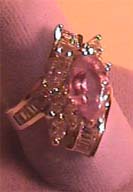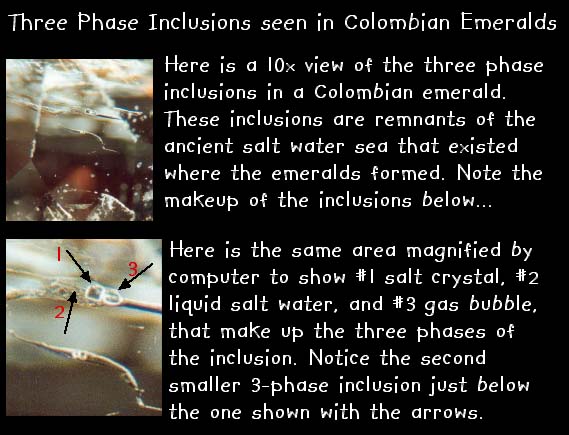The Gemstones
Emerald
 Consumer Information
Consumer Information
What color is it?: Emeralds will occur in a variety of green colors. Some can have bluish overtones and some yellow overtones
What is the story behind this gemstone?: Emeralds have been given some bad media coverage recently, due to someone who must not have been in the jewelry industry very long making a big deal out of emerald treatments. Emeralds are very porous, just like opals. And occasionally need to be sealed with a clear resin to protect the stone. As long as the stone is not treated with a colored resin that gives it a false color, this treatment is and has been acceptable for about the past 500 years. And don't believe that story about the emerald being brittle. Emeralds, by nature, have fissures running through them. Some are weakened by these and can break. (You can see some running through the two loose emeralds above). But a good quality emerald will wear a long time...as long as you are not pouring concrete or framing houses or something while wearing them. But some of the cheap quality emeralds sold by discount stores will break fairly easily due to their being....cheap quality.
Can I wear it everyday?: Yes, for normal everyday wear emeralds pose no more threat than any other gemstone.
Is it expensive?: They can be. Emerald prices can run from as low as you want for the television shopping channel stuff, to US$10,000.00 per carat and more for a fine Colombian emerald of top quality.
Is it a birthstone?: May
What do I need to know before going shopping?: For emeralds be sure you are shopping with a jeweler who has a trained gemologist on staff. You should look either for a Fellow of the Gemmological Association of Great Britain, a Certified Gemologist of the American Gem Society, or a Graduate Gemologist of the GIA. There are a lot of unknowns about emeralds that you, as a consumer, cannot tell. So you need a well trained gemologist when shopping for emeralds.
Rare Trapiche/Star Emeralds from Muzo Mine, Colombia
|
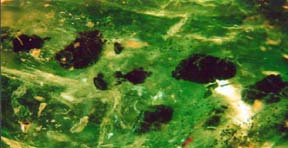 Close up view of mica inclusions in a Brazilian emerald.
Close up view of mica inclusions in a Brazilian emerald.
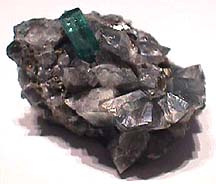 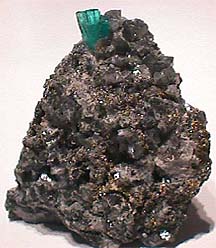 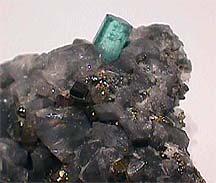
Three views of natural Colombian emerald crystals in calcite matrix. Each showing the golden pyrite formations that so often are seen as inclusions inside Colombian emeralds.Emeralds donated to YourGemologist.com by J. Kast and Company. One of the finest emerald dealers I know anywhere in the world. Thank you to Joe Kast and everyone at J. Kast and Company. |
General Information
Source: Colombia has the finest emeralds. Followed by Brazil, Africa, India, Pakistan and other sources in no particular order.
Chemical: Al2Be3(Si6O18) aluminum beryllium silicate
Formation: Forms in hydrothermal vents
Crystal System: Hexagonal crystals (see photographs above and below)
Unusual Properties: The finest emeralds are colored by chromium and will give a red reaction to the Chelsea Filter. In some parts of the world any emerald not colored by chromium, but rather by vanadium, is called a green beryl. One of the most unusual emerald formations is the trapiche emerald shown at left. This is caused by tiny inclusions of colorless beryl or albeit filling in at the crystal junctions to form a radial pattern. This type of emerald the Spanish miners called trapiche, which is a Spanish word for a type of gear wheel. These emeralds are reported to be found in both the Muzo and Chivor mines of Colombia,
.....
 A rare chatoyant or cat's eye emerald courtesy of www.esmerald.com.
A rare chatoyant or cat's eye emerald courtesy of www.esmerald.com.
Photos courtesy http://www.esmerald.com who we highly recommend for additional information on emeralds.
Gemological Information
575 carat Colombian emerald crystal shown above
RI: 1.577 - 1.583
Birefringence: .005 - .009
Optic Character: U-
Specific Gravity: 2.72
Hardness: 7.5
Transparency: TL - TP
Special Identifying Properties and Tests:
Red reaction to Chelsea Filter will confirm chromium content as shown above. A marquise cut Colombian emerald in regular light and through a Chelsea Filter showing the red reaction due to chromium content. An excellent indicator for Colombian origina since few other world sources produce chromium based emeralds in commercial quantity.
Three phase inclusions diagnostic for Colombian origin as shown below:
Synthetics: Many
Imitations: Many

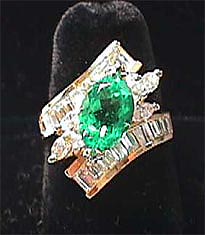
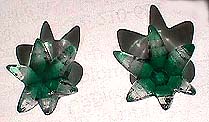 These gems are the first of their kind to be found anywhere in the world and you see them here first at YourGemologist.com thanks to our good friends at
These gems are the first of their kind to be found anywhere in the world and you see them here first at YourGemologist.com thanks to our good friends at 